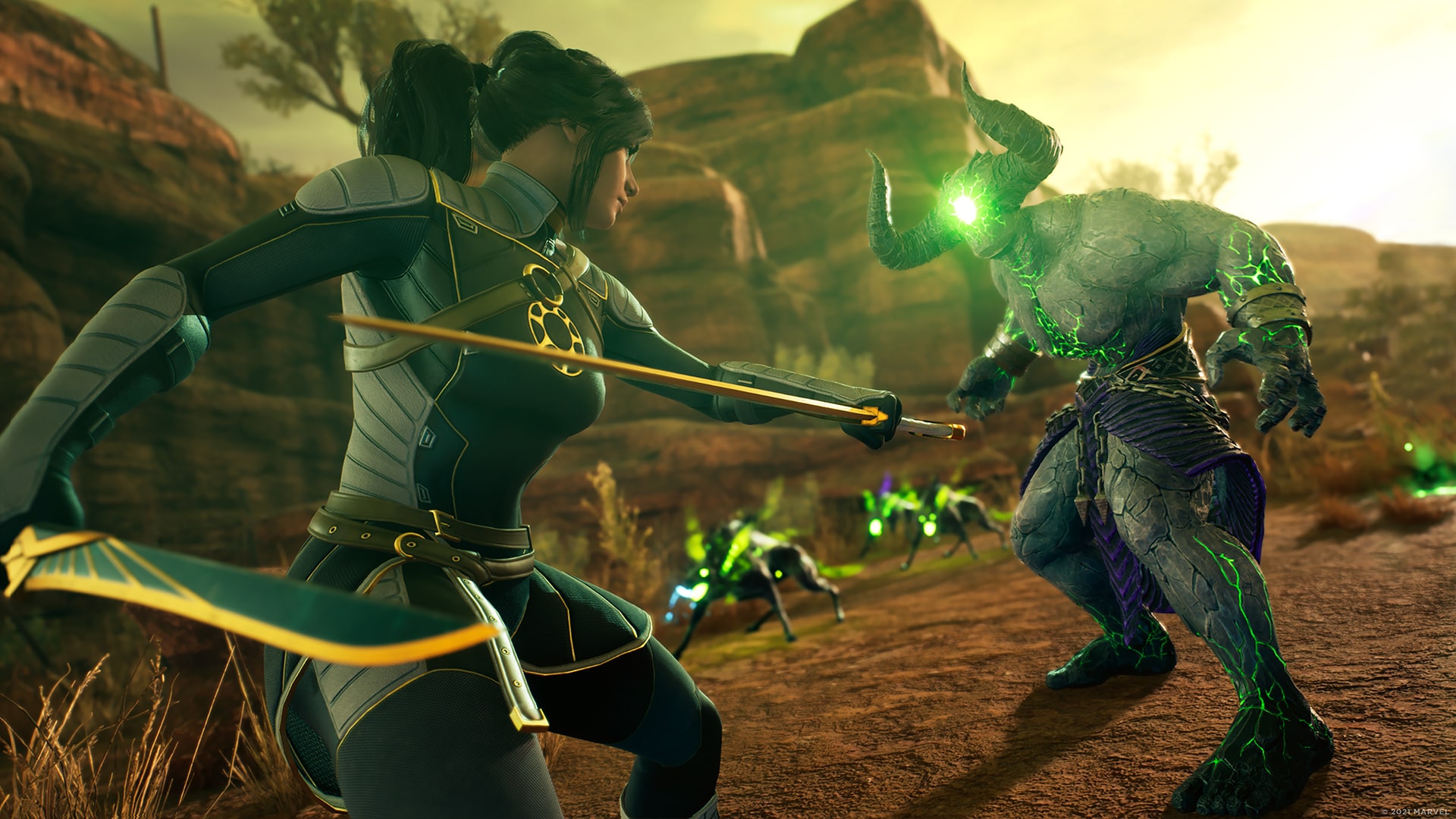Laptop Mag Verdict
Marvel’s Midnight Suns’ Saturday morning cartoon-esque plot disguises what is an immensely satisfying tactical strategy game with interesting RPG elements that keep you hooked for hours on end.
Pros
- +
Addictive tactical gameplay
- +
Fascinating RPG elements
- +
Impressive visual and sound design
Cons
- -
Darkness of the plot is at odds with the family-friendly delivery
- -
Turn-based strategy will not be for everyone
- -
Awkward camera at times
Why you can trust Laptop Mag
After the Metallica-laden announcement trailer, I was insanely hyped for Marvel’s Midnight Suns, and in my first 15 hours of playing this game, developer Firaxis has mostly matched my level of excitement.
The XCOM and Civilization developers jumped into the Marvel ring with a strategy game that adds an interesting RPG twist into the recipe for extra flavor. Now, hype aside, I was curious how superhero battles would translate into a card-based tactical world — turns out it does so really well.
Marvel’s big blockbuster characters enter a unique game that busts the usual action adventure formula, to scratch a particularly niche itch that will make many strategy gamers happy. But it’s not for everyone.
Off to never-never land
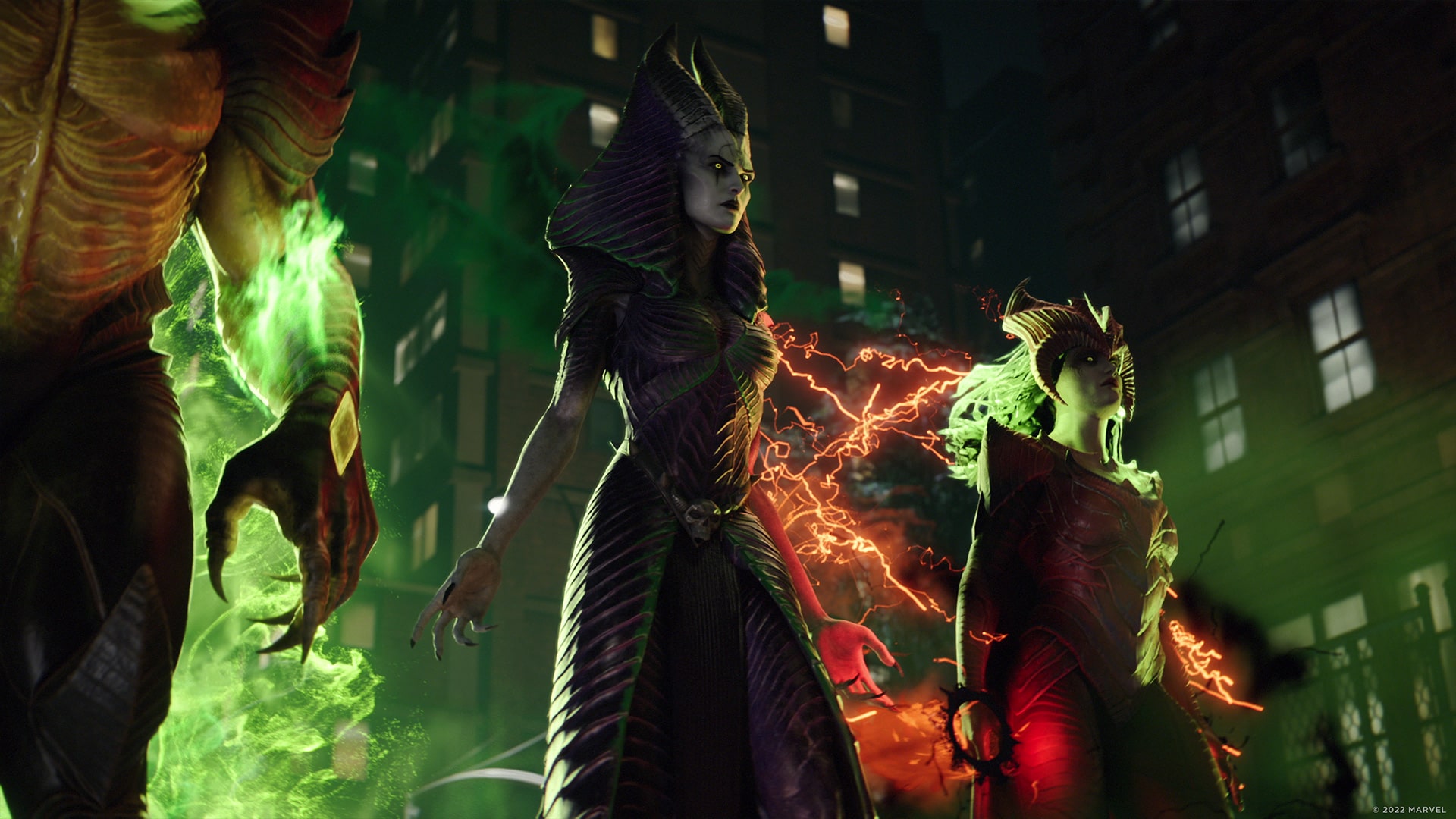
The story takes some inspiration from the early 90s comic book arc named Midnight Sons — not all of it, but some of the key elements and the exploration into the supernatural, more occult side of the Marvel universe.
You step into the shoes of The Hunter, the recently resurrected son or daughter (created by you at the beginning of the game) of the Thanos-level villain, Demon Queen Lilith, who was also recently rebirthed. You are tasked with working alongside many of your favorite superheroes (and some Marvel characters who have been relatively unused in games to this point) to defeat her and everyone’s favorite antagonists: Hydra.
The premise is simple, and it’s presented with some decent visual flair and strong sound design, from the orchestral score to the beefy impact sounds of every hit. However, one gripe is that the hangout activities with your fellow heroes are presented almost half-heartedly as you both stand fixed in certain scenarios. I’ll explain more about why the gameplay elements here add an interesting RPG dimension, but I would prefer these look and feel more alive.
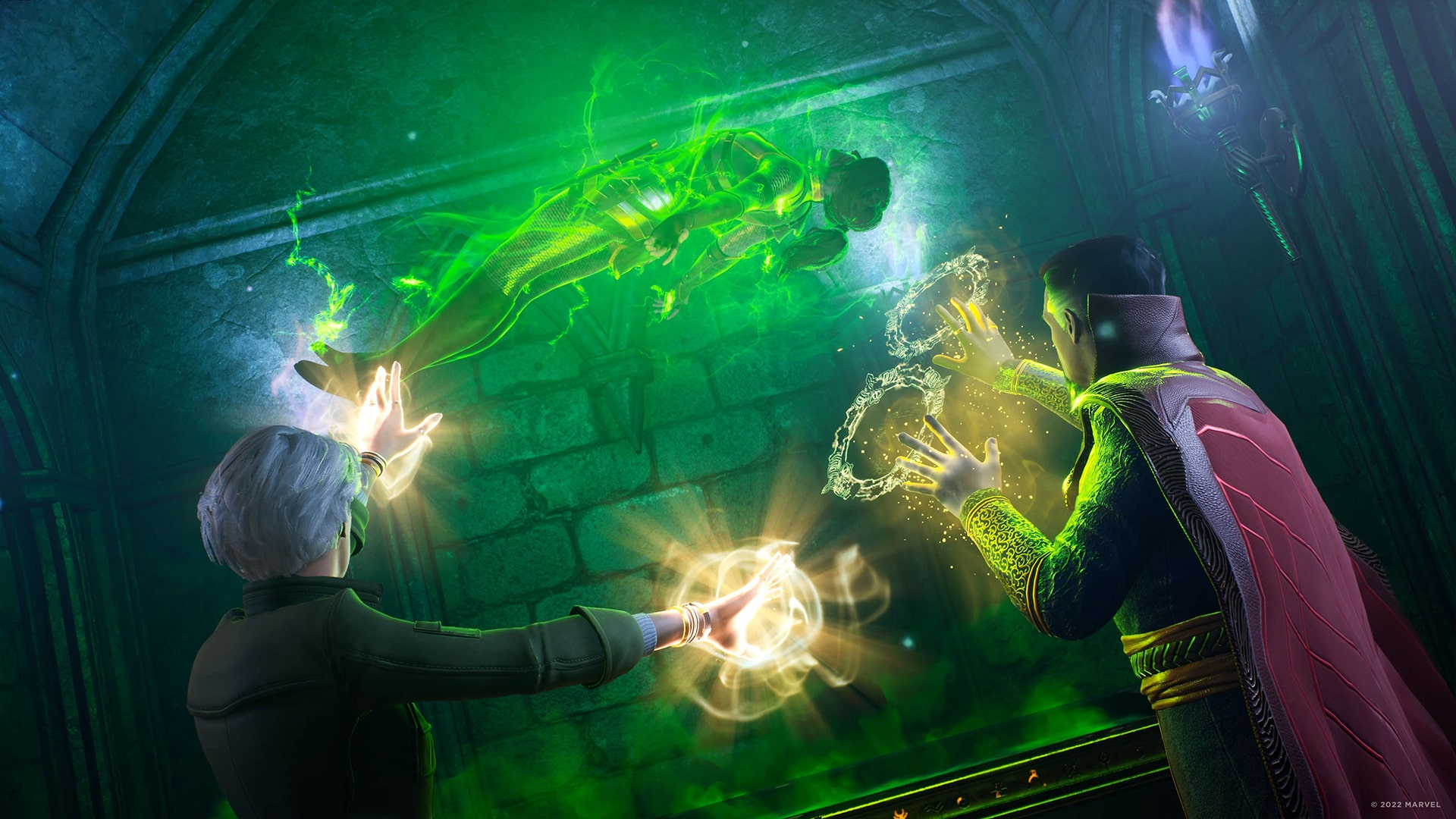
The lore is piled onto you from an early stage — to the point that I didn’t really feel connected with my near-300-year-old protagonist. However, as time went on, I got to learn more about my place in this universe and things began to clear up. While this core motivation moves along in the background, it’s the relationships you form with the other heroes that really drives things forward (more on those later).
Sign up to receive The Snapshot, a free special dispatch from Laptop Mag, in your inbox.
Sometimes, what they say can be a little at odds with the darker themes this story is trying to hit — from Spider-Man’s cheesy quips to the bickering between Iron Man and Doctor Strange. It makes for an odd paradoxical feeling where Firaxis is trying to keep this family friendly, but that leaves some ripe supernatural grounds of Marvel untouched.
However, for what it is, this is peak comic book storytelling, which for the majority of the time, I enjoyed with other characters feeling authentic and the developers doing a good job of really bigging up the threat of Lilith.
A (sort of) simplified XCOM
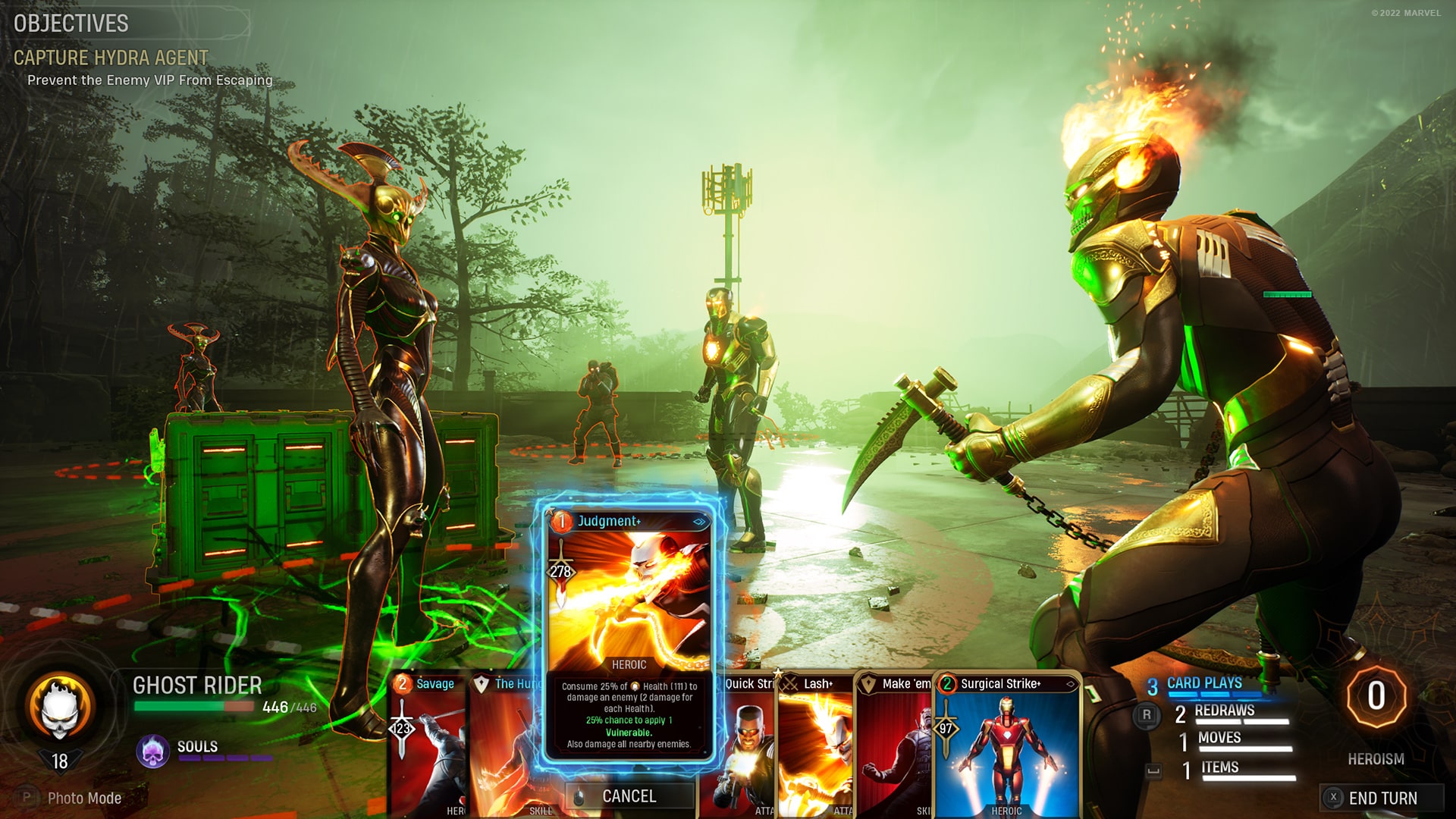
To answer the biggest question on the lips of a lot of Firaxis fans, this is not XCOM with a Marvel coat of paint. It’s a different beast with some strengths and weaknesses if you compare them like for like, but on its own, you’re going to have a lot of tactical fun here.
Tactically, the card-based strategy offers an impressive level of depth — each battlefield gives you a series of randomly drawn cards per turn to figure out where to best move your heroes and what to do. This deck can be developed and upgraded over time.
The nature of not knowing what resources you’ll have for each turn incites real-time planning, making Midnight Suns a true test for the noggin. It is that unknown nature of what you will be able to do each turn that adds to a planning in real-time feel to it all.
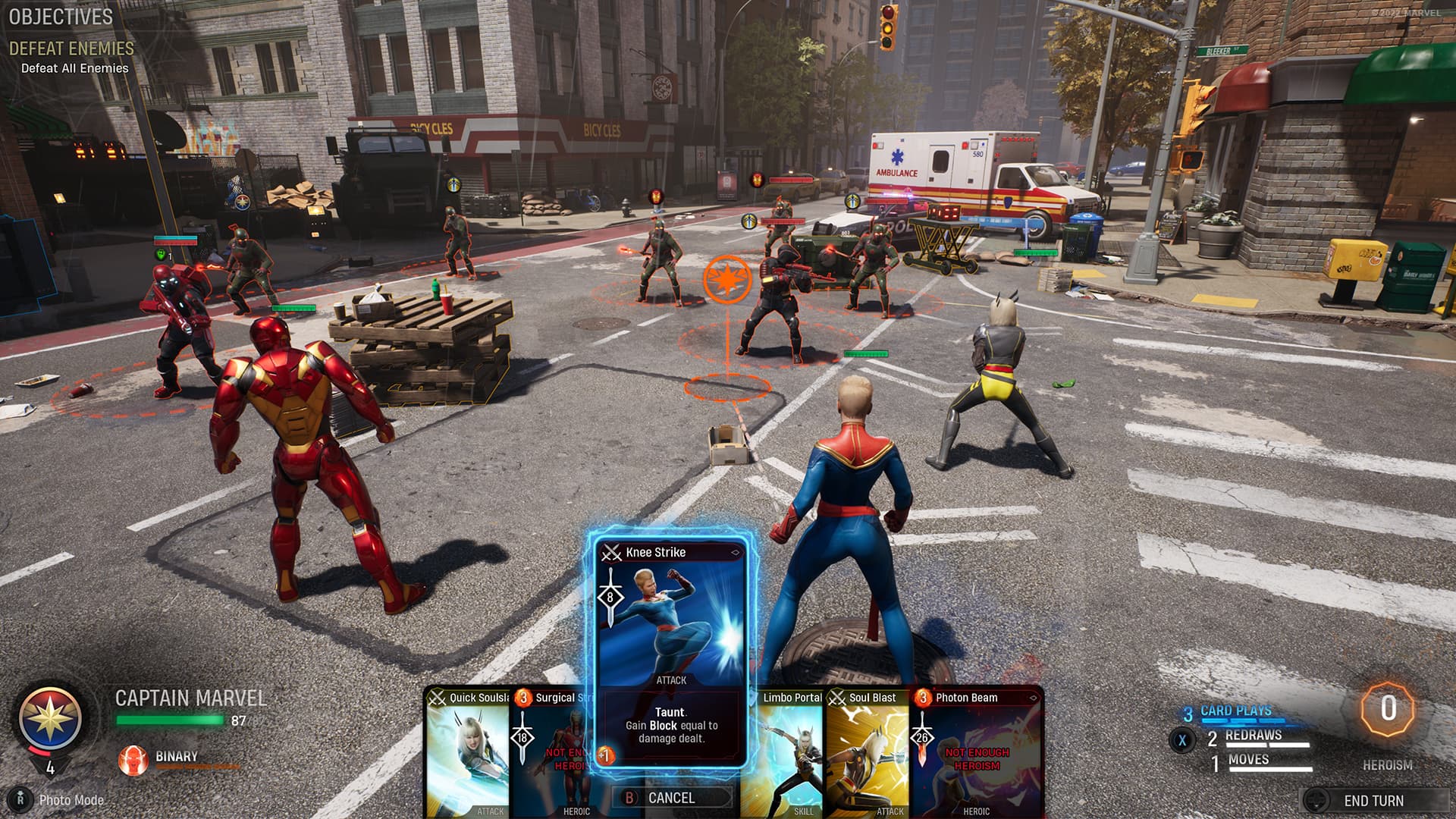
Most of the levels I played came with an additional objective, like stopping a villain from escaping or saving civilians for example, which added an interesting wrinkle to my plans and provided an additional sense of time pressure.
But even with these impediments, and some moments of awkward camera control, none of it felt unfair nor overly complex.
I know some people may lament the loss of the punishingly intricate gameplay structure and verticality to the scenarios that XCOM provided, but I rather prefer this for better balance, improved strategic clarity, and a tightly focussed experience that keeps you in the game.
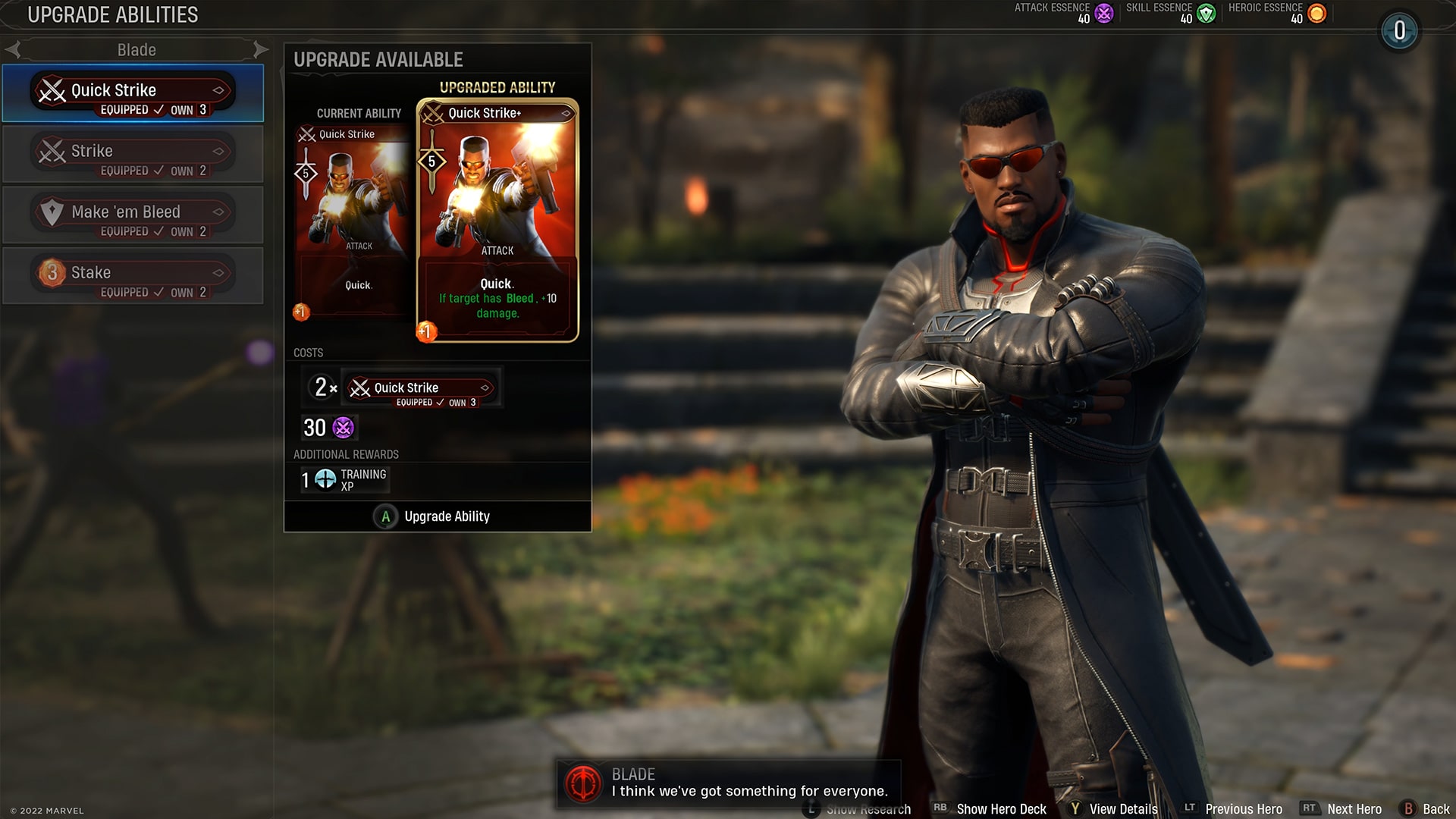
But stepping out from XCOM’s shadows, Midnight Suns has a great little RPG running permeating it, too. It all happens at your team’s home base and where you were resurrected: The Abbey. In between missions, you head back here to progress the story, upgrade and create new cards based on pickups from your missions, and, most interestingly, you can just hangout with the other superheroes.
It has a “Superhero Café” vibe to it, as you can watch a movie, go workout, or play board games. Your only interaction in these moments is dialogue choices, as is the case with a lot of what happens in The Abbey (being your central hub for the game), with each choice impacting your relationship with each character in some way. But it’s cool to see it all play out and observe how it impacts the synergy between your teammates back in the battlefield.

A note about color blindness accessibility
I have protanopia color blindness, or as my optician said back in the 90s, “you can’t see reds and greens that well.”
What does this mean for Marvel’s Midnight Suns? My playthrough went largely without any hitches except for one mission where you have to defend a Hydra device that the team plans to extract and study.
The strategy here is to target enemies with a small, slightly transparent red exclamation mark above them. But I found it next to impossible to spot these at first, leading to multiple replays and a ton of frustration. Once my partner pointed them out, I realized that turning on the colorblind mode was the only option, and it did fix the problem for sure.
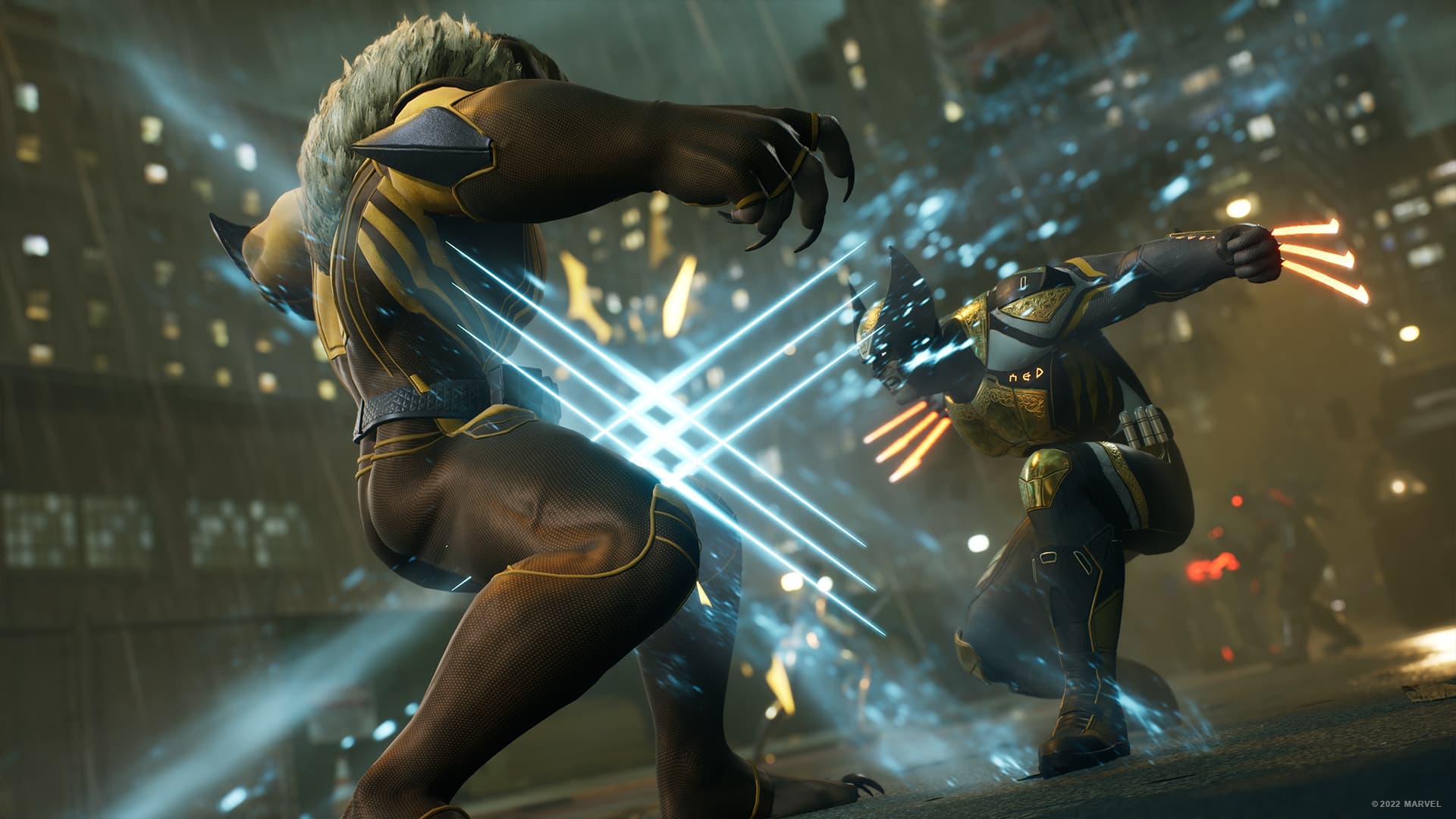
While other games simply change the color of the UI to better suit your eyes, Midnight Suns seems to change the color science of the entire scene, which turned Spider-Man into an oddly orange shade of red.
Now, I can’t speak for all colorblind people, but I can speak to my own experience. You get used to the colors of the world around you in life — accustomed to them. Even though I know my guess of what color specific things are may be wrong, you are familiar with real world shades. So when all the visuals are made overly warm with this option, I notice and it kind of spoils the experience.
So my recommendation to Firaxis is this: give us an option to make the colorblind mode change the UI elements specifically, rather than the whole game itself.
Marvel’s Midnight Suns PC performance
Even with the impressive amount of detail and fidelity to the artistry of Marvel’s Midnight Suns, it has been optimized well to work on systems weak and strong.
For example, on my Asus TUF Gaming F15 with RTX 3060, a mix of medium and high settings produces a rock solid 60 FPS, which doesn’t compromise on the striking visual effects of combat.
But even if you are on something older, such as my basically elderly Asus ROG Zephyrus G15 with a GTX 1650, you can still manage to squeeze a smooth framerate with low and medium settings. Make sure you do tweak it though, as the defaults on both of these produced mixed results.
Bottom line
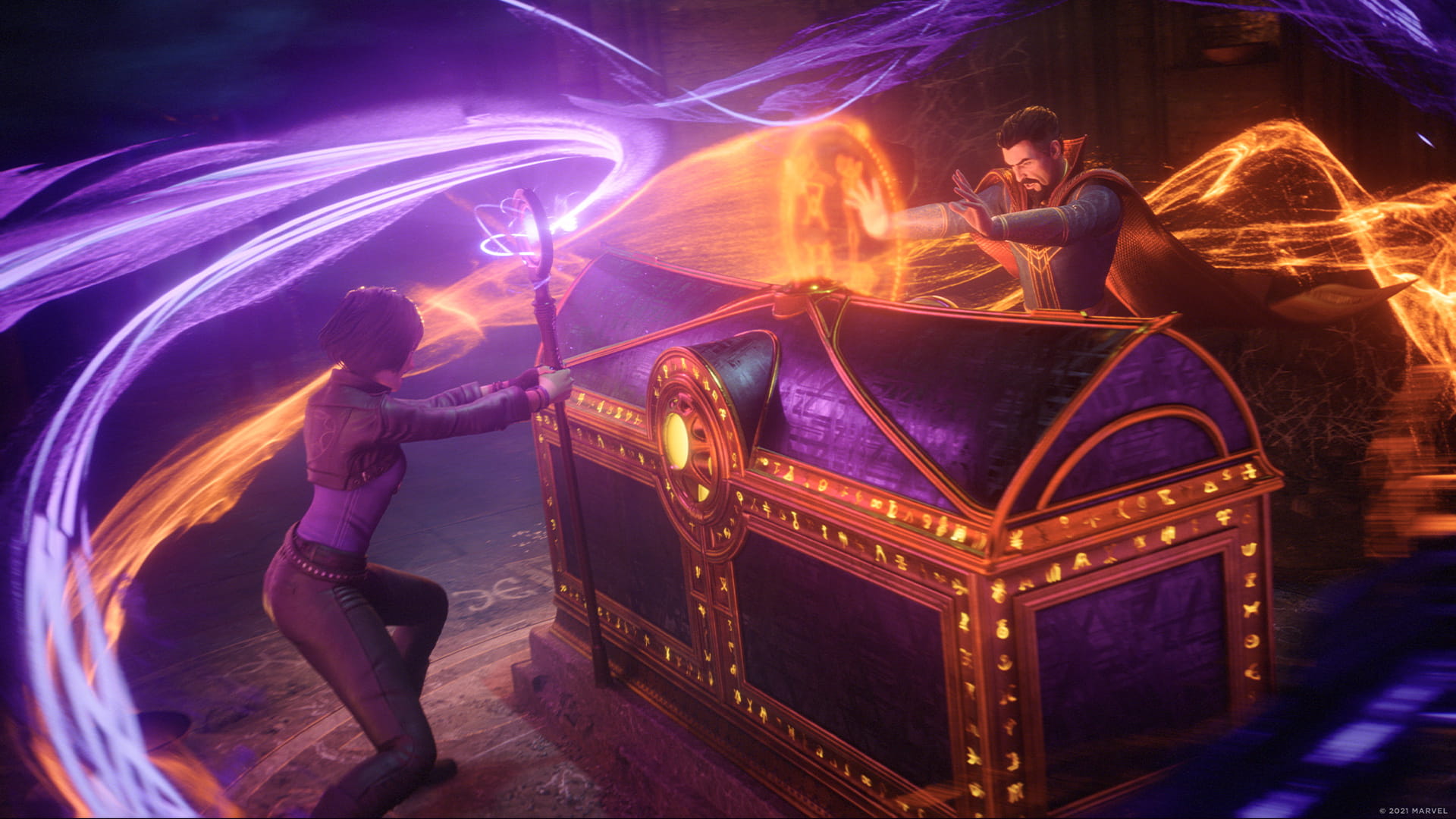
Marvel’s Midnight Suns is what you get when Metal Gear Acid and Persona 5 Royal get freaky. It’s an interesting game that is not going to be for everyone, but for those who have been looking for a tactical superhero experience, I’m pretty confident you’re going to love it.
The strategic elements are deep without feeling overwhelming, the story is gripping, and the characters are infectiously charming. It’s not perfect, as there were a couple of visual and gameplay glitches, and more to the core of the gameplay, moving your camera around the battlefield can be a little cumbersome.
But the production values are solid, the card-based gameplay is bliss for those who prefer their games with an element of planning, and the RPG elements serve to give you a real sense of purpose.

Jason brought a decade of tech and gaming journalism experience to his role as a writer at Laptop Mag, and he is now the Managing Editor of Computing at Tom's Guide. He takes a particular interest in writing articles and creating videos about laptops, headphones and games. He has previously written for Kotaku, Stuff and BBC Science Focus. In his spare time, you'll find Jason looking for good dogs to pet or thinking about eating pizza if he isn't already.
